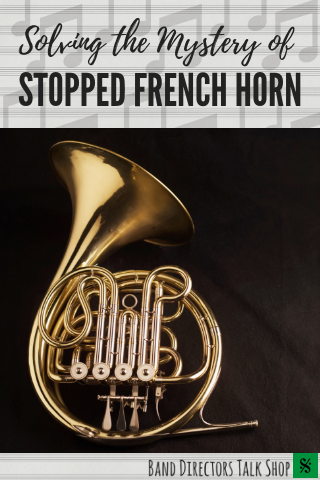
It is obvious from years of judging solo competitions that stopped horn can cause confusion for non-horn teachers. Stopping the horn does, indeed, alter the acoustical properties of the horn. (What happens to the pitch is the cause for the confusion and does not necessarily need to be discussed here.) The crucial factor is to realize a change in pitch does happen and how to compensate for the change.
For practical purposes, the simplest guide is to finger the written stopped (+) pitches one half-step (minor second) lower on the F side of the double horn.
Example: A written third-space C is notated to be played stopped. This would normally be played Trigger/Open on the Bb horn. To produce the correct stopped pitch, finger the note a minor second lower…third-line B natural… on the F horn using the 2nd valve.
The guidelines are:
- Finger the notated stopped pitch a minor second lower (1/2 step lower) than the written pitch.
- Use the F side of the horn (in general).
Given the difference in length of the F and Bb sides of the horn, the difference in pitch change will not be the same on both sides of the horn. On the shorter Bb horn, the change of pitch is closer to an out-of-tune 3/4 step. Thus, the suggestion is to use the F side of the horn as a general guide.
How to stop the horn:
Not all hands are the same size or thickness, so these are general guides and not rules set in stone! Some adjustments simply must be made to accommodate such differences.
- It is imperative that the basic right-hand position is correct!
- There cannot be any open spaces between the fingers.
- Likewise, there can be no open space between the thumb and index finger.
- The bell must be sealed completely; there can be no open gaps!
Closing the bell with the hand:
- The movement from open to stopped should be as small and efficient as possible.
- Slide the thumb toward the bell brace until the thumb contacts the upper bell and the heel of the hand contacts the inner side of the bell. Now form a tight seal.
- Think of closing the bell at an angle across the bell and not by “closing the gate.”
- Closing the bell at an angle allows for a better seal. Remember, no leaks are allowed; leaks are the enemy.
- Try to get a great seal with the heel of the hand.
- Think of “pushing the fingers against the bell.”
- Perhaps thinking of trying to “press” both sides of the bell with the hand will help establish a good seal.
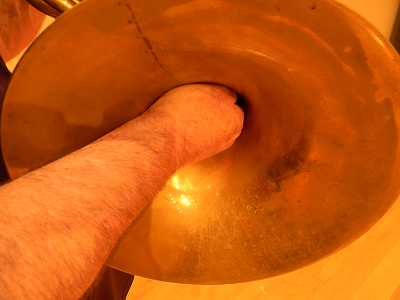
Looking closely at the photograph below, one can see the seal is not complete as there is an opening between the thumb and fingers.

A good stopped-horn sound (especially at mezzo-forte and beyond) should be “brassy,” “buzzy” and “tight.” To obtain this characteristic sound, the seal must be as free of leaks as possible. A good diagnostic test for this is to play a third-space C stopped (F horn 2nd valve), then play middle-C an octave lower. If the tone and intonation match, the seal is correct. If there are is a noticeable difference in timbre and pitch, it is likely there are leaks. Try to adjust the hand position to get that tight seal.
The stopped mute:
The brass mute is somewhat pear-shaped with a stem. It completely removes the problem of sealing the bell associated with hand size. It is almost imperative to have one of these for stopped passages in the low register.
Just as with hand-stopping, fingering the note a minor second below the written pitch is still required with the stopped mute. The term transposing mute is sometimes associated with the brass mute. The general guides for playing hand-stopped on the F horn also apply to the brass mute.
It is imperative to develop good stopped-horn technique. In many instances, composers ask for changes from open to stopped-horn so rapidly that it is not possible to use the mute. Stopped-horn will be encountered in horn parts in band, orchestral, chamber music and solos.
Now for a helpful hint on playing stopped horn above written third-space C!
On most horns it is possible to use the Bb horn when stopping works above third-space C. In this instance, the solution is to finger the pitch 1/2 step above the written note. For example, if fourth-line D is written stopped, try fingering the first valve on the Bb horn (fingering for the Eb a minor second higher).
This method is not always 100% accurate; use a tuner and experiment with fingerings and you can certainly find stable fingerings on the Bb horn. This makes for a bit more security than stopping on the F side in the upper range.
Read Dr. Gavin’s article on Tips for Muting the French Horn (non-transposing) HERE.
Charles Gavin is an Endowed Professor of Horn in the School of Music at Stephen F. Austin State University. Students of Dr. Gavin have been noted for their success as performers and teachers. Most notable in the field of music education, four of his former students have had their bands named Honor Bands in the state of Texas. Dr. Gavin’s students have been or currently on faculties at the University of Michigan, University of Alabama, Ithaca College, Texas A&M University, East Texas Baptist University, Texas Women’s University, Oklahoma City University and UT-Arlington. As performers, his student’s experiences range from a Grammy-winning studio artist in Hollywood to the Dallas Symphony, Houston and San Francisco symphonies and concert venues in Europe.
Related Reading:
Helpful Horn Hints (Part 1) – How to String a French Horn Valve
Helpful Horn Hints: Three Places to Oil French Horn Valves
Avoiding the Most Common Pitfall – TENSION!
Three Tips for Improving Stopped Horn
If you would like to receive our weekly newsletter, sign up here.
Don’t forget to like us on Facebook too!
Learn. Share. Inspire.
BandDirectorsTalkShop.com


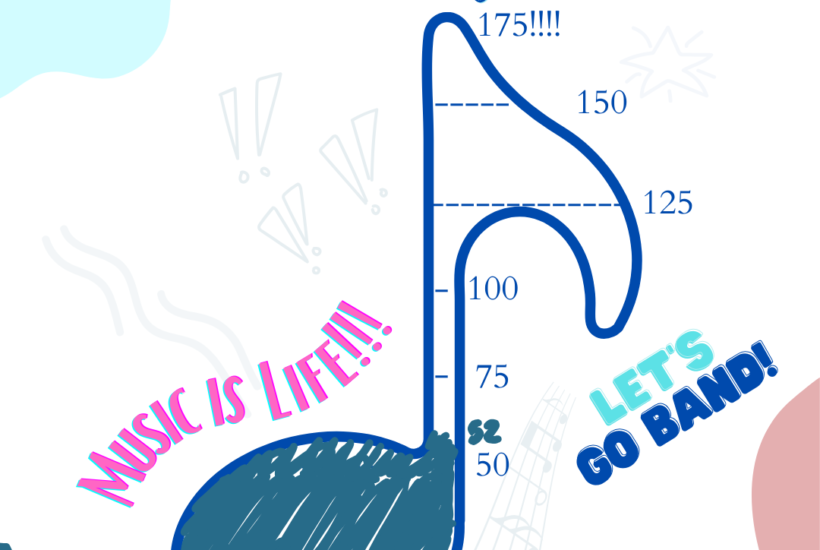
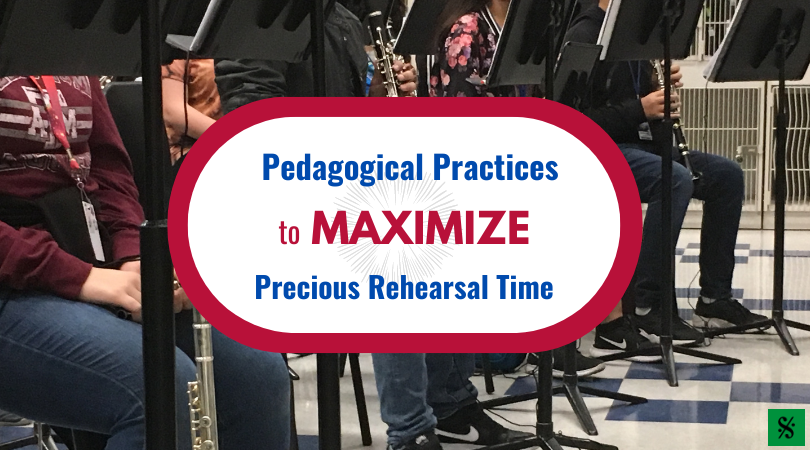

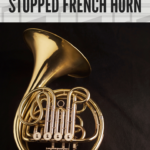
Leave a Reply
You must be logged in to post a comment.